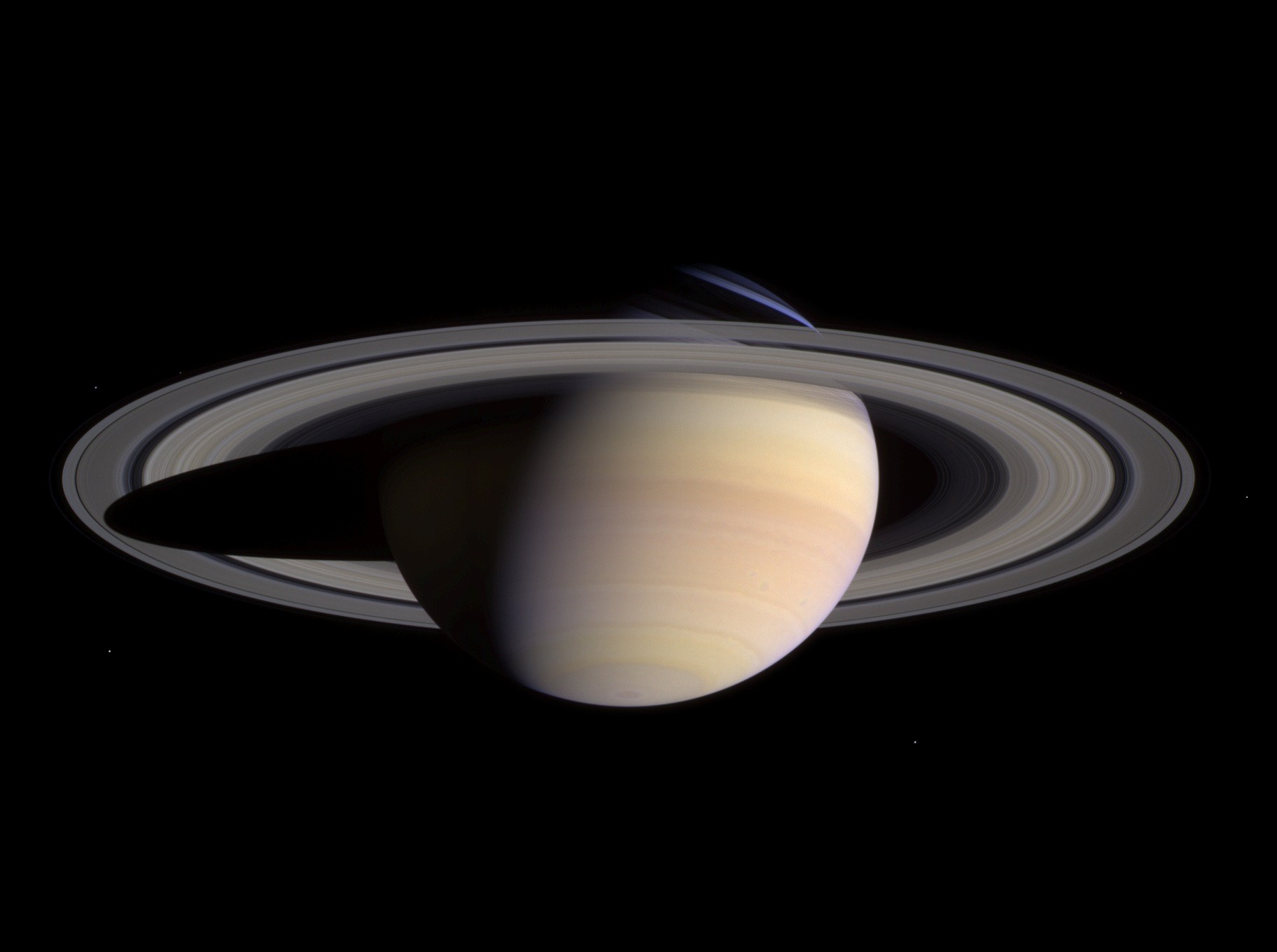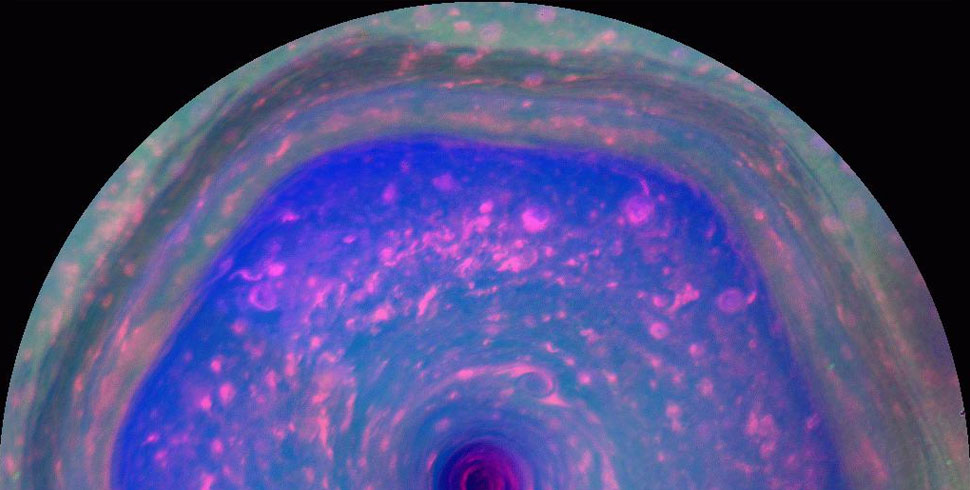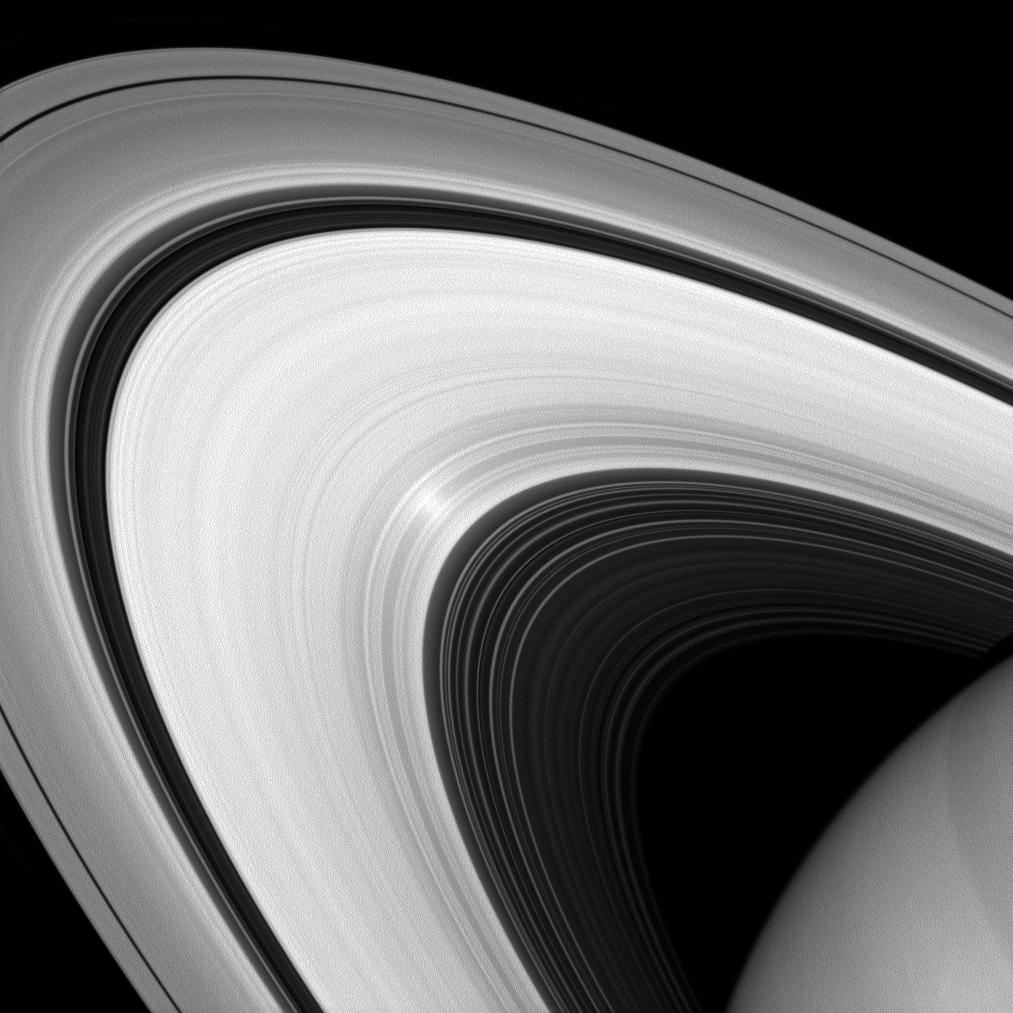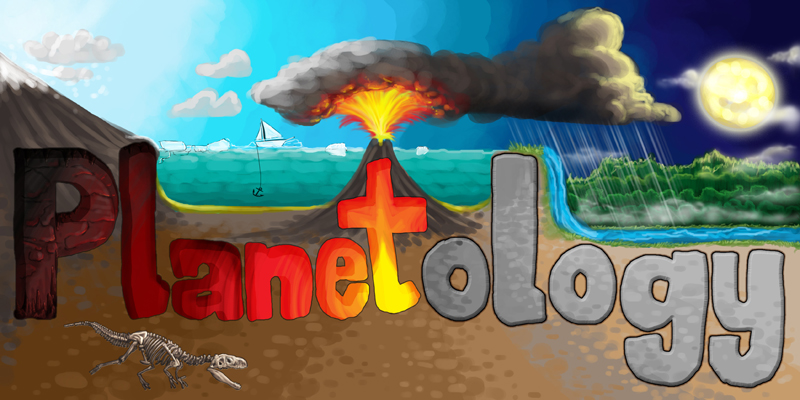Saturn
Article curated by Grace Mason-Jarrett
The planet Saturn is easily identifiable by its ring structures. At over 270,000 km wide, these majestic bands are held in place by shepherd moons, called as such because their gravitational pull herds dust and fragments of space rocks into the rings we can see. Most of the data on Saturn was gathered by the NASA Cassini mission and its extension study, which finally finished in September 2017. However, there remains so much left to discover about this planet, including its internal processes and how it formed...

Geometric clouds
In the 1980’s, Voyager sent back images of a strange hexagonal cloud around the northern pole of Saturn. Initially, it was assumed this was a one-time thing, a coincidental, short-lived accident, but these thoughts were quickly disregarded when additional pictures of the geometric fog were taken by NASA's Cassini mission. Scientists have been able to recreate this and other geometric shapes in the lab, possibly explaining what’s happening here – but it’s not clear what would be driving the rotation that has been discovered to be necessary for the effect. We also don’t know exactly how stable the cloud formation is, or how long it will last. Some scientists suspect that since the rotation rate appears to be the same as the emission rate of radio waves from the planet (yes, Saturn is giving out radio signals), this could reveal the rotation speed of Saturn’s core. However, its thick atmosphere stops us from seeing more of what's going on.



Ring mysteries
The elegant rings which surround the gas giant can be seen from our own back gardens on a clear night with little more than an amateur telescope, and while they are Saturn’s defining feature, it doesn’t necessarily mean we understand them. Cassini observed molecular oxygen in the rings and thin atmospheres of Saturn’s moons. This discovery has led to great discussion, since molecular oxygen is generally made in organic processes by living things. This is not the only way molecular oxygen is formed, of course, geological activity can also produce it, or even (less often) radiation on water molecules.


Voyager also noticed something strange about Saturn’s rings as it flew past. One of its darker bands, the B ring, showed radial lines going through it like spokes on a bicycle wheel. These lines troubled astronomers because they couldn't be explained by gravity. What’s more, photos from Cassini sometimes showed evidence of these spokes and other times showed no trace at all. Astronomers agree that the lines must be short-lived and sporadic, appearing randomly in the ring structures for a few hours before being wiped away. Some scientists think they may be a result of Saturn’s magnetic field, while others believe it could be due to lightning storms in the planet’s atmosphere!

Even more of a mystery, and perhaps a more obvious one, is where exactly did those rings come from? We have been able to see them for over 400 years now and yet we still don’t really know how they got there. From looking at the light coming through the rings, scientists have been able to determine their composition: ice, water and a little bit of space dust. Just like your mirror, astronomers expected the rings to reflect less light and become duller with age as more and more dust settles in the bands; the fact that they are still bright led us to believe that the rings were new. However, new evidence suggests that the rings refresh themselves often when the material collides with itself within the rings, giving them the appearance of being younger than they really are[1]. Scientists are still unsure how so much water and ice ended up in the atmosphere around Saturn.

Hurricanes
Scientists are studying the hurricanes on Saturn in an attempt to better understand their formation, intensity and movement here on Earth. The difficulty with collecting data from hurricanes is that the parts of interest are just too turbulent and dangerous to enter. Current devices cannot stay in the storm long enough to collect clear and conclusive data. Saturn's hurricane are more static than those on Earth and don't have oceans to contend with. So far, forecasters are learning better how to predict hurricanes on Saturn – but will it translate to Earth, where warm oceans are considered a source of the initial hurricane energy?


 3
3Energy imbalance
Most of us like to keep our homes and offices at a steady, comfortable temperature. We do this by turning on the heating when it's cold, and opening windows or using air conditioning when it's hot. This adjusts the thermal equilibrium, the balance between total energy coming in and going out. All objects obey, or are supposed to obey, this simple law. If you put more energy in, it gets hotter. The hotter it gets, the more energy it radiates away, until the energy coming in is the same as the energy going out. But Saturn, along with its siblings Jupiter and Neptune, don't seem to want to play by these rules – all three of the gas giants are emitting more heat than they seem to be receiving[2]. Something must be heating up the giant planets, but we haven't worked out what yet!
Learn more about Energy imbalance of the giant planets.


 3
3
Saturn might be mysterious – but so are its moons, of which there are at least 53, and as many as 82 (but they are awaiting official classification as moons, and naming). They range in size from the giant moon Titan, bigger than Mercury, to smaller than a sports arena. Titan's atmosphere raises more scientific questions: the amount of nitrogen suggests it may be older than Saturn itself. Previously, scientists thought it formed along with Saturn's rings, but now they have new theories about the origins of the second largest moon in the solar system. As the only known satellite with more than a trace of atmosphere, isotopes are being studied to try to work out what's going on.

Methane has also been found in the atmosphere using Earth-based telescopes and confirmed by the Cassini mission – but we don't know where it comes from. Calculations suggest that this methane ought to have been broken up by cosmic radiation within 50 million years or so (a very short time when compared to the age of the solar system itself). Therefore it's present abundance seems to indicate that the methane in the atmosphere is being replenished from a source on Titan. Methane is usually associated with organic processes involving life, but can be made by cryovolcanoes (volcanic features which release water and other gas/liquids with low melting points, on colder worlds than our own). Titan has a thicker atmosphere than Earth, layers of which are almost entirely opaque to visible light. As a result, we have no good images of the Titanian surface, and so can't identify the source of the methane.


 2
2With an atmosphere thicker than our own, scientists also wonder how Titan's atmosphere circulates. It's seasons are 30 times slower than ours, so observations require patience! However, scientists have observed a rotating vortex over the South Pole, hinting that the atmosphere rises in the hemisphere experiencing summer and falls at the winter pole, but we cannot yet say for certain that this is the case.

Mysterious moons
Another moon, Enceladus, may hold water: and scientists are still trying to discover more about its composition. The Cassini mission observed enormous plumes of water ice, containing some organic molecules being ejected from the moon near it's southern pole, and ice has been sighted all over. But where does it come from? Scientists speculate that liquid pockets or even underground water spanning the moon – but we won't know more until we can send over probes!

 2
2
And what is causing the internal warming, allowing water to form in the first place? Along with the water are nitrogen, carbon dioxide, methane and some organic compounds, all in states which suggest warming! The heat provided by gravitational interactions between Enceladus and Saturn isn't enough to explain this. Scientists are still exploring the problem.

From warming and weather to gases in the atmosphere, Saturn has a lot of questions to answer, and could be an invaluabel study to help us understand not only the great planet, but also life and conditions on Earth.
This article was written by the Things We Don’t Know editorial team, with contributions from Ed Trollope, Jon Cheyne, Cait Percy, Johanna Blee, and Grace Mason-Jarrett.
This article was first published on 2015-08-27 and was last updated on 2021-06-16.
References
why don’t all references have links?
[1] Esposito, L,W., et al. (2008). Moonlets and clumps in Saturn's F ring Icarus 194 (1): 278-289. doi: 10.1016/j.icarus.2007.10.001.
[2] Ingersoll, A. P., (1990). Atmospheric dynamics of the outer planets. Science 248:308-315. doi: 10.1126/science.248.4953.308.
Recent Saturn News
Get customised news updates on your homepage by subscribing to articles













